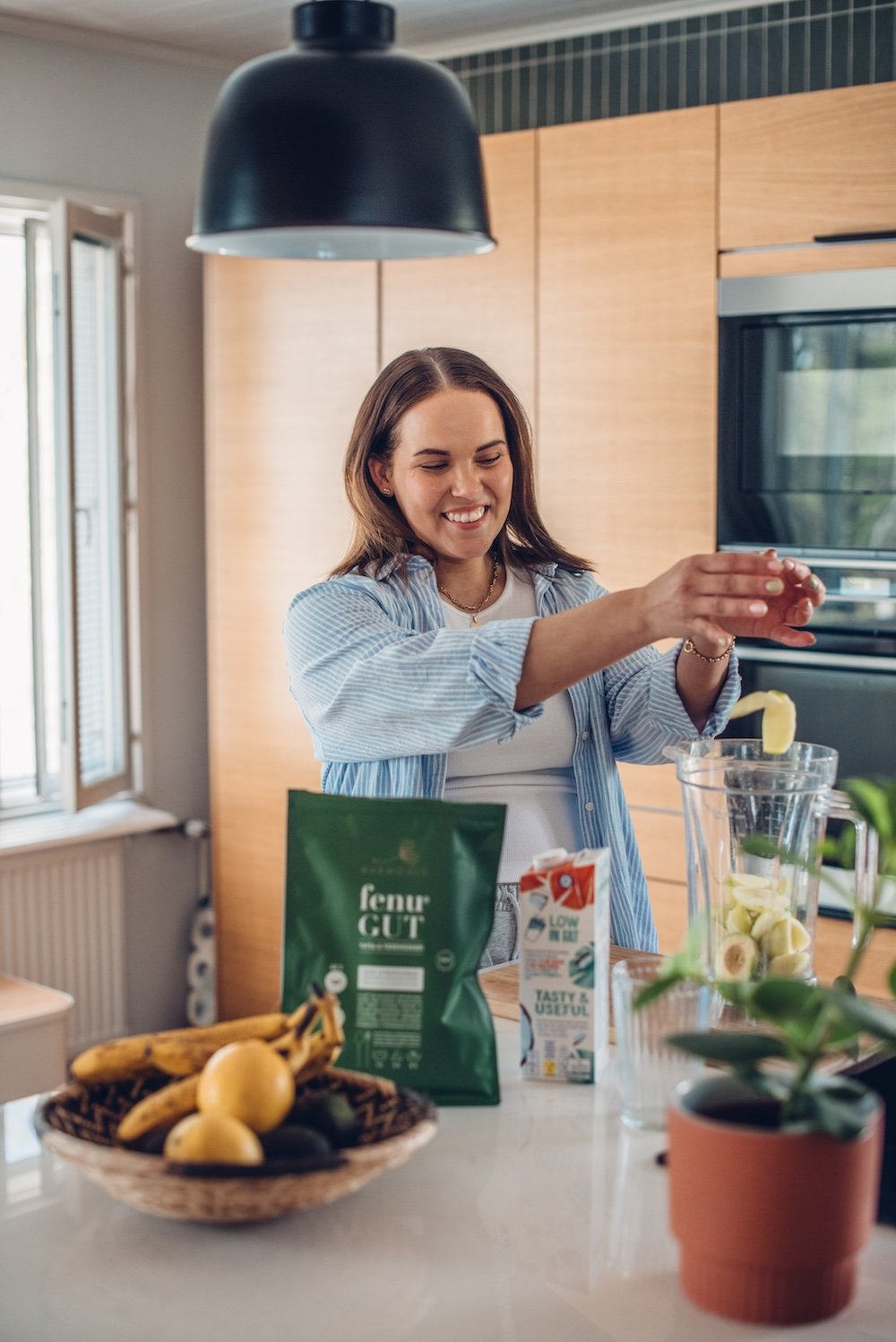Come with me as we travel back in time.
It’s September 2018. Influencer marketing hasn’t reached its apex yet, but it’s skyrocketing in popularity and the channel of choice is definitely Instagram. YouTube has been trucking along since 2007, but that’s a different beast. TikTok has just launched globally, and is still as of now, unexplored and untapped (but that will soon change). And Boksi didn’t even exist yet!
Knowing what we know from the future, we want to run an influencer marketing campaign now and get ahead of our competition. But... what should you focus on?
The way we do influencer marketing has changed a lot, and continues to change every year. But we thought it would be fun to examine the best practices of 2018 to see how far influencer marketing has come.
Let’s get started!
Influencer count reigns supreme
Back in September 2018, Instagram’s algorithm was still in its infancy, being added only in March 2016. Meta (then Facebook) added it to address the sheer amount of content that was being added. Having content displayed chronologically meant that you couldn’t keep up with what was going on in your feed. So they had to do something to provide some help.
Engaging content was the content that won, like now - but the easiest way to get traction was… well, have a lot of followers. As I said, the algorithm was still in its infancy.
So influencers with big follower counts got a lot of traction and their content was generally weighted higher than those with fewer followers. There was also less talk around ‘fake followers’, and buying followers was common. Instagram has been fighting this fight since 2014, but it wasn’t until 2018 that there came a concerted effort and push back.
More followers also gave you more clout, and since most brands were only concerned with how an influencer presented themselves, other metrics were unneeded. Engagement? Reach? Who cares when you have one million followers?
Well, in the modern day, followers are just one indicator of influence. There have been a ton of changes over the years to the algorithm, platform, and user behaviour that have impacted this, but the fact is that follower count is no guarantee of influencer marketing success. I mean, clearly there is some level of success, but high counts can come from overall fame. Consider someone like Lionel Messi. Does he have millions of followers because of Instagram, or because he's Lionel Messi?
So while going with an influencer because of their follower count worked then, it’s not a solid strategy now. We want to see content from celebrities we adore, but we also want to see content from our friends and people we trust.

Paying in exposure or products
Back in 2018, choosing content creator or influencer as your career path was less common (but no less certain). There was less knowledge around influencer marketing, and so most brands paid influencers in products or exposure on their channels, as by simply tagging the brand in your post, the algorithm could give you a nice boost.
While you did have to mention that it was a paid promotion, enforcement was still spotty, so it was easier to fly under the radar.
However, this was never a sustainable position, as influencers still need to pay their bills. While many smaller influencers work a regular day job, it is possible to sustain yourself as a content creator, even with smaller follower counts. It just comes down to understanding your value and your value to the business, something that modern influencers definitely understand.
I believe that this shift away from exposure towards cash for influencer marketing is only a good thing. Influencer marketing was new, and we were all still learning about the benefits. It was risk-free for both parties - brands get exposure for the cost of some products, and the creators get a bit more online clout and some sweet merch. However, paying influencers in cold, hard cash is an established practice since it's easier for brands to calculate ROI on influencer marketing.
Perfect aesthetics, every time
While the "Instagram vs Reality" trend started in 2014, in 2018, it was still pretty easy to ignore the fact that what you see on Instagram doesn’t necessarily reflect reality. There was no BeReal and TikTok was still in its infancy.
So you would still see a ton of highly polished, perfect feeds, and as brands, we want to make sure we’re seen in a positive light. It’s no wonder that the best content had their rough edges honed away, and that brands would prefer being seen in a pristine feed than a rough one.
While Instagram still trends towards a more curated feed with more effort put into pictures, social media in general has shifted away from the need to create the perfect online image and rewards a realistic approach, where influencers (and brands!) can share their imperfections and mistakes. To err is human, after all. And I'm sure we could all use a bit more humanity in our feeds.

Lack of insights and reporting into actual performance
In 2018, understanding which influencers actually performed best was tough, let’s be honest. It’s challenging even today, and requires special tools to get the right data from your social media platform of choice. And while Meta has improved visibility into post performance, how that post performance translates once the viewer leaves Meta is another problem.
Most influencers weren't as wise to their own reporting and value, too. They reported on whether or not their post got a lot of views or engagement, and in some rare cases could inflate the numbers. On the brand side, it felt a lot like choosing influencers based on hunches rather than actual data. Those hunches often being “this influencer’s profile looks good”.
Plus, if you worked with multiple influencers, then compiling all that data meant breaking out the spreadsheets. That may be more enjoyable for some than others, but no matter your love (or hate) of Excel, it would take time to compile all that data and see who performed best. And you received the data for one day… but what about the next day? Lacking a dashboard with real-time data meant reporting was inaccurate.
Thank goodness we're in 2025 and not 2018!
Modern influencer marketing tools like Boksi gather all sorts of influencer marketing data about your collaborations and put it in one place. I'm talking about data like influencer follower counts, average performance, follower demographics, and much more. Plus, you can also evaluate how your collabs are performing in real-time, with data straight from the source. No spreadsheets needed!
One-off collabs that are a glorified ad in the feed
This was a tactic used heavily in 2018, but it doesn’t work anymore. It was common practice for influencers to create a post that they would then delete after a certain period of time for a lower price. There was little thought around creating a discussion around the brand or the product; instead, there was a fairly transactional approach to the post.
This sort of tactic worked back in 2018, but now it’s less effective. One of the biggest reasons why this ad-like tactic doesn’t work is that… well, there are simply more ads in our Instagram feed than before. While we don’t have hard numbers, as the numbers depend per user, it’s safe to say you’ve experienced more ads than previous years while browsing Instagram. There was also talk about increase in ads from 2019.
So when we are already overloaded with ads, seeing an influencer plug a product that’s clearly an ad, that just doesn’t fly anymore. It’s all about building trust with the audience, and starting a discussion. Which leads us nicely to our next point!
Influencers on a pedestal instead of facilitators
In 2018, influencers as a news source was starting to rise, but it was a far cry from what it is today. We definitely held influencers on a pedestal (some still do), and the larger the follower base, the larger the pedestal.
However, with the rise of micro- and nanoinfluencers, these pedestals started to crumble. We became tired of having people with fame tell us how to run our lives, when their lives were nothing like ours. We craved authenticity, and we wanted to find people who we could relate to; influencers and content creators who were honest about their lives and gave us something realistic to aspire to.
Influencers now are incredibly powerful in facilitating discussions between brands and consumers. We distrust brand messages, but will trust someone else recommending a brand, especially if it’s a nuanced take. We want to hear about the good and the bad, and make our own decision once we have the necessary information.

Treating influencers like glorified ad slots
I get it. Brand safety is a thing. And there is nothing more safe than running a social media post through four rounds of revisions and getting half the company’s opinion on it. A lot of brands took this approach to influencer marketing back in 2018 (well, to be honest, a lot still do this...).
Brands dictated everything that influencers should do, from the words they used to the shot style they wanted. They did all this despite selecting the influencer for their content and style. No collabs, no flexibility; just pure brand safety.
I know I'm being facetious, but I'm right there with you. Brand safety is incredibly important. You need influencers who are brand safe and match your values.
However, you are tapping into an existing brand built by the influencer, not overriding it. This trend has changed, thankfully, but back in the day, brands were totally inflexible with influencer creativity. And when that led to poor results, not only did the brand feel disappointed, but the influencer felt disappointed from their own poor performance, and the influencer's audience felt disappointed at something that was so clearly dictated by a brand and not straight from the influencer's heart.
The best results come from a perfect synergy of your brand and the influencer's brand - that's guaranteed to produce something greater than the whole!
Not disclosing paid partnerships
While the regulators were getting wise to the changing field of advertising, there was still a lot of catch-up to do in 2018. Brands and influencers both could get away with neglecting to mention a paid partnership. And while this didn’t cause much fuss then, it definitely causes a fuss now.
Modern consumers are more aware than ever of all the different ways they’re being advertised to. The strangest thing? We often don’t mind - as long as we know it’s an ad. Having an influencer you respect talk to you about a product is one thing. But it’s a huge breach of trust if an influencer claims they are not in a paid partnership when they are. And if there is one thing that influencers need to, well, influence, it’s trust.
And as brands, you also need trust. Trust in both the influencers to be honest with their audience, but also trust in your own product that it backs up your claims.
Trust is hard to build and easy to break, it’s true. But once it’s there, that’s where true loyalty comes from.
The more things change…
The more they change!
Influencer marketing, and creator marketing in general, has developed and matured immensely. And being part of social media, it changes fast. Sometimes too fast to follow. So we get it, it’s hard to keep up with the trends if you aren’t living on social media (like many of our creators are).
That’s exactly why we started Boksi. We wanted to simplify the entire creator marketing process, whether it’s a creator wanting to work with their favourite brands, or those brands searching for the perfect creators. And it’s been hard work, but fun work. We’re proud to fight against these outdated influencer marketing practices, like:
- Providing real-time, first-party data from Meta and TikTok to provide you with concrete insights on how your campaign is performing right now
- Everything brands and creators need to communicate in one place, whether it’s choosing posting dates, reviewing drafts, or sharing feedback
- Facilitating smooth and simple payments for creators - they set their fee, you accept, and we handle the rest.
- Building trust with long-term partnerships and collaborations with the right creators, chosen for the right reasons
If that sounds like something you want for your influencer marketing, well, that pretty button below will tell you all you would want to know about our platform.





.jpeg?)

